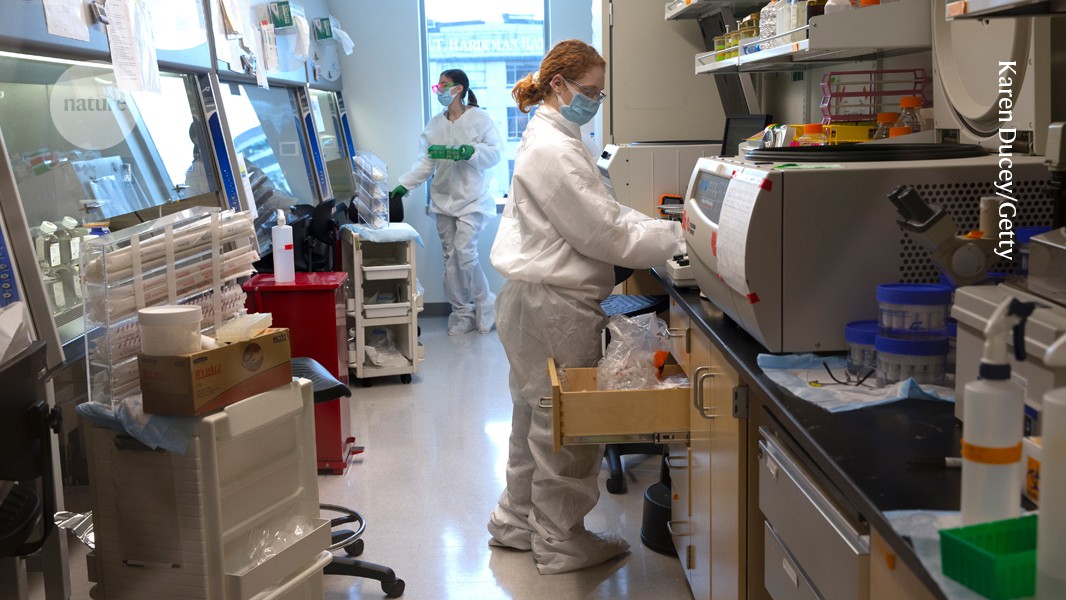These US labs risk imminent closure after Trump cuts

US researchers who must forage for their own salary by finding grants fear they will be the first to go as federal research dollars disappear

Laboratories run by scientists who rely almost entirely on US grants for their income could close as research funding dwindles.Credit: Karen Ducey/Getty
Even when the first four of his five federal grants were cancelled in February, Jeremy Springman still had hope. The social-science research that he co-leads at the University of Pennsylvania in Philadelphia had enough funding from a large US Department of Defense project to tide him over for two more years. He checked in with his defence-department programme officer, who reassured him that the remaining grant would be safe.
But by mid-March, it was gone, too — and with it, Springman reckons, his last shot at earning a living by doing research. “That was really the end of things,” he says. “My position just isn’t going to be viable in the future.”
Like thousands of scientists in the United States, Springman draws most of his salary not from his university, but from grant money from outside sources. Such ‘soft money’ faculty members and those who work in their laboratories are feeling particularly vulnerable at a time of deep uncertainty about the future of the US government’s support for research. Labs that run on soft money are likely to be among the first to close as federal funding is cut, because their principal investigators cannot ride out hard times on a university payroll. Once closed, these labs and their projects will be difficult, if not impossible, to resurrect even if federal funding is restored.
“When there’s uncertainty as to that funding, there’s uncertainty as to our positions,” says Alejandro de la Vega, a psychology and neuroimaging researcher at the University of Texas at Austin, who receives all of his salary from grants. “I don’t know what the future will look like for researchers like me.”
Vanishing funds
Federal funding agencies have been in turmoil since the inauguration of US President Donald Trump in January. In the past two months, the new administration has cancelled or delayed thousands of federal research grants, and has threatened to cut off grants to specific universities that do not comply with its demands. In February, the US National Institutes of Health announced that it would drastically limit the overhead costs it will pay on its grants ― a move that, for now, has been blocked by the courts.
Asked for comment, a White House official said that the administration has “paused things to open the hood of the car and take a good look to audit what the previous administration was up to.” During that inspection, the US government has cancelled grants from agencies such as the US Agency for International Development and Department of Defense, and has laid plans to cancel hundreds more at the US National Institutes of Health.
The effect of such cuts on soft-money faculty will depend on the terms of their appointments. Some researchers are paid with soft money only during the summer, when they are not teaching, but others rely on grants for their full salary. “The general public thinks that if you’re a college professor, you get paid by the school,” says Zoe McElligott, who studies neural circuits at a state university. But for soft-money faculty members, that’s not the case, she says. Her university provides about 20% of her salary; she must forage for the rest on her own.
Soft-money positions are common in US medical schools and schools of public health, as well as at independent research institutions. But they can be found in other departments and schools as well. For example, economist Wei Yang Tham at the University of Toronto in Canada and his colleagues surveyed professors at 150 US research-intensive institutions of higher education and found that 72% of those in the natural sciences earned at least part of their salary from grants1. They also found that, on average, medical-sciences professors collected almost one-third of their wages from outside sources. A 2022 survey of about 300 planetary scientists found that 21% of respondents were in soft-money positions2.
Some researchers, including de la Vega, relish the opportunity to focus on their labs, without the obligation to teach or serve on university committees. “I am 100% doing research, that’s what I love about my job,” he says.
But others were pushed into soft-money roles by the job market, he adds: “Hard-money positions are incredibly competitive.”
Leaving the lab
Several soft-money researchers who spoke to Nature anticipate having to leave research. If so, the projects they lead will disappear along with them. Krista Harrison, a social scientist at the University of California, San Francisco who draws 100% of her salary from soft money, says soft-money faculty can typically re-start stopped projects only if the funding gap is a few months. “Once the principal investigator has to leave academia, the work is ended forever,” she says.
Enjoying our latest content?
Login or create an account to continue
- Access the most recent journalism from Nature's award-winning team
- Explore the latest features & opinion covering groundbreaking research
or
Sign in or create an accountdoi: https://doi.org/10.1038/d41586-025-00924-4
This story originally appeared on: Nature - Author:Heidi Ledford


















